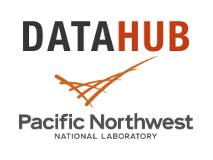Journal Article
Proceedings of the National Academy of Sciences, vol. 112, iss. 51, pp. 15707-15712, 2015
Authors
Jillian M. Emerson, Bradley M. Bartholomai, Carol S. Ringelberg, Scott E. Baker, Jennifer J. Loros, Jay C. Dunlap
Abstract
Significance
Circadian rhythms are common to most eukaryotes, and, in humans, circadian dysfunction is associated with sleep disorders, elevated incidence of cancer, and metabolic abnormalities. The biological oscillators giving rise to fungal and animal clocks share a common regulatory architecture, as well as some highly conserved components, many of which were identified in genetic screens. Here a gene,
period
-1 (
prd
-1), previously identified in a genetic screen in the filamentous fungus
Neurospora
, is shown to encode a protein (an ATP-dependent RNA helicase) that is closely related to yeast and human proteins involved in RNA metabolism and transcription. The cycle length in
prd
-1 mutants is only abnormal when available glucose is elevated, suggesting that normal clock regulation in response to nutrition is altered.
